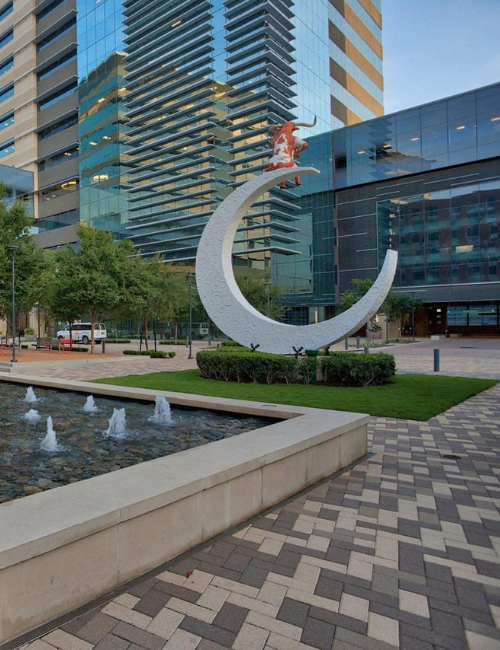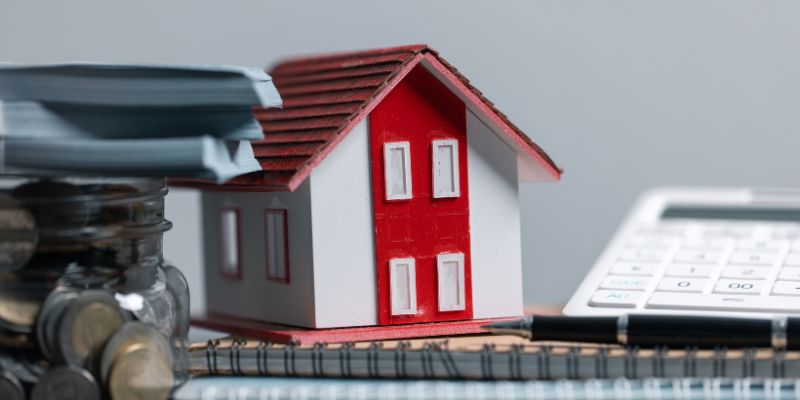
Homeowners, potential buyers, and real estate investors in Richardson, TX need to know the property tax rates in order to make smart choices. This detailed guide gives information about current rates, what causes tax changes, and how policies made by local governments affect people. Knowing everything there is to know about property taxes in this booming Texas city can help your financial plan, whether you’re planning to buy something new or make investments in the future. Learn more about Richardson’s tax system by digging into the details. This will help you make sure you’re ready for your financial obligations.
Understanding Property Tax in Richardson
The property tax is an important way for the city of Richardson to pay for important services. Residents can better understand how their property taxes affect the community if they learn more about the details of the system. Understanding the city’s tax structure and the main things that affect these rates is important for property owners because it helps them get around the system more easily. Due to the fact that Richardson is in Dallas County, it is important to look into how the county’s rating methods affect tax rates. This detailed guide will shed light on these issues, giving people the information they need to make smart choices about their real estate purchases.
Overview of the Tax Structure
To understand how local tax rates are set and how they affect people’s finances, it’s important to know how property taxes work in Richardson. The needs of the city, the role of the county, and state rules all play a big role in shaping this system. In its most basic form, property tax is based on the assessed value of a home, which is set by county appraisal bodies. Dallas County, which includes Richardson, is in charge of these appraisals, which have an effect on the total rates that homeowners have to pay every year.
Several districts are involved in the local tax system. One of these is the school district, which gets a lot of these funds and is often called ISD. Every year, the appraisal districts check to see if the value of the properties they list is fair and in line with the state’s rules set by the Comptroller’s property standards. The way Richardson sets up his property taxes affects a number of services that depend on these funds, including funding for schooling, emergency services, and improving infrastructure. The tax rate that property owners have to pay is based on a number of factors, and these factors are often changed to reflect changes in population, public service needs, and economic situations.
The city carefully balances these needs to make sure it has enough money and keeps its tax rates low compared to other places in the region. In addition, Richardson gives specific incentives to promote residential growth and keep the economy in balance. Residents can understand how property tax rates are set and managed in the city by getting an overview of this well-thought-out method. For investors and homeowners looking to plan their finances, using a Mesquite, TX Capital Gains Tax Calculator can provide a clear picture of potential tax obligations and help make informed decisions.
Key Factors Influencing Tax Rates
Property tax rates in Richardson are affected by a number of important factors, so it’s important for homeowners to understand these factors. One of the main factors is the county assessment process, which decides how much a property is worth. In Dallas County, where appraisals are done using standard methods, knowing how these assessments are made can help you figure out how much tax you owe. The tax rate is affected by the assessed value because that is how the county figures out how much tax is due.
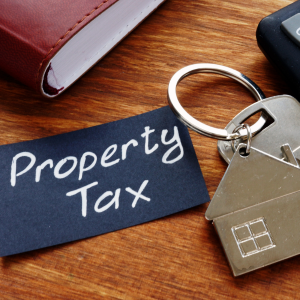
As a result, changes in property values can cause changes in yearly tax responsibilities, which can affect plans for budgeting and buying a home. The budget needs of different parts of Richardson, like the city government, ISD, and other special districts, also have an effect on the tax rate. Each of these groups wants a certain amount of property tax money to pay for things like schools, public safety, and utility services. Government officials at the county and state levels keep an eye on these rates to make sure they are applied fairly and meet the financial needs of all sectors. Changes in tax rates can also be caused by requests from the community for better services or facilities. These things show how hard it is to keep the tax rate stable while still getting the money that’s needed.
Richardson’s property tax rates are also affected by the state of the economy in other countries. When the economy goes down or up, it can affect the value of real estate and, by extension, the amount of tax money that is expected. The city keeps a close eye on these changes and adjusts tax rates as needed to make sure there is a steady flow of money without putting too much stress on taxpayers. Projects that try to improve the economy and make neighborhoods bigger often bring in new money, which could lower some people’s tax bills. In the end, knowing all of these factors helps property owners plan for changes and adjust to the city’s changing tax system.
If rising property taxes in Richardson are becoming overwhelming, now might be the ideal time to sell your home for cash. Read other FAQ’s here to learn how our trusted cash home buyers in Garland and nearby cities in Texas can help you sell quickly and stress-free.
Comparing Richardson Property Tax Rate to Nearby Cities
Residents, potential homebuyers, and property managers can learn a lot from seeing how Richardson’s property tax rates stack up against those of nearby towns. Dallas, a well-known neighbor, offers a useful benchmark for comparing Richardson’s tax rates to those of other cities. By examining these differences and understanding the city council’s goals and incentives, residents and property managers can better evaluate the pros and cons of living or investing in Richardson versus Dallas. These insights reveal how Richardson’s city council balances taxes with the need to provide quality services, while also showing how business and residential growth plans influence tax rates and real estate management across the area.
Tax Rate Differences with Dallas
The difference in tax rates between Richardson and Dallas paints a clear picture of the area in Dallas County. Since both towns are in the same county, they have to follow the same general rules set by the county’s appraisal district. These rules affect how much each city pays in taxes. But the two cities have different goals and business plans, which is one reason why their tax rates are different. Dallas’s tax rates are usually a little higher than Richardson’s. This is because Dallas is a big metropolitan area and has a lot of infrastructure needs. Larger cities like Dallas need larger amounts of money for public services like schools, transportation, and emergency services.
This higher demand for spending usually leads to higher tax rates, which are needed to keep the city’s public services running smoothly. Richardson’s tax plan, on the other hand, focuses on keeping businesses competitive and creating a good business environment. The city offers many incentives to companies to move there. This helps the local economy grow and can make tax rates more reasonable. Focusing on the technology and business services sectors may be good for Richardson because it brings in more tax money without raising the average homeowner’s property tax rate. While Dallas still has to deal with a wider range of urban problems, Richardson’s more focused economic efforts may help make taxes a little less painful for residents and business owners.
The two towns are also different because of the role of independent school districts (ISDs). Richardson ISD is known for having a strong educational framework. It also makes good use of the tax money it gets, which creates a balance between good school spending and manageable tax obligations. As a result of having more students and more budget needs, Dallas ISD may need more tax money, which can lead to different tax rate structures. By looking at the different tax rates, you can see how each city balances its budget needs with its community goals. In the end, this comparison shows how Richardson’s rates are designed to save money while raising living standards.
Benefits and Drawbacks of Richardson’s Rates
The property tax rates in Richardson are a unique mix of good and bad for the people who live there. Focusing on keeping tax rates low gives the city a strategic edge, especially when it comes to attracting and keeping businesses and homeowners. Residents can enjoy a better quality of life without having to pay ridiculously high taxes. This makes the city a desirable place for families and businesses looking for good business opportunities. The city council plays a vital role in keeping these rates fair so that they can pay for essential services and help the economy grow.
If you’re planning to sell a property in Richardson, understanding your potential profit is just as important as knowing your property tax. You can use a Capital Gains Tax Calculator to estimate how much you might owe after the sale. This tool helps you determine the taxable gain based on your purchase price, selling price, and ownership duration, giving you a clearer picture of your net proceeds before finalizing any sale.
One of the best things about Richardson’s current tax plan is that it lets people get a lot of different public services. The city makes sure that facilities and basic services always have money by managing its money well. Some of these are well-kept roads, good waste management, and strong emergency services. All of these improve the quality of life and make people feel like they belong in their town. Also, the city’s policies that are good for business help the economy grow by creating new jobs and raising property prices. This could help keep tax rates stable or even lower them over time. There are, however, some problems with Richardson’s tax plan.
Residents should always be aware of how changes in tax rates could affect their total tax obligations, especially when the economy is unstable. The city’s efforts to keep rates low can sometimes make it harder for it to spend on big, long-term projects or big improvements to public services. One example of budgetary tension that can happen when property tax rates are low is when people want improved public transportation or more space for schools. This careful fiscal dance means that the city needs to be looked at all the time to make sure it doesn’t stop growth possibilities.
Also, Richardson’s tax rates are usually lower than those of some nearby towns, but any rise, no matter how small, can hurt low-income households more than others. To make sure that residents contribute the same amount of money, we need a more nuanced method that takes into account differences in income and property values. In the end, the city has to deal with these complicated problems while also adapting to changing economic conditions and changing residents’ wants. This fine balance between offering good services and keeping prices low is still very important to Richardson’s long-term success and popularity.
If you’re considering selling your home, Richardson’s competitive property tax rates compared to nearby cities could make it the perfect time to get top value for your property. Contact House Buying Heros to learn how you can sell your house quickly and hassle-free.
Impact of School Districts on Property Tax
In Richardson, property taxes are affected by school systems in a big way. People can see how school funding and tax rates are linked by looking at how the Richardson Independent School District (ISD) works. As a major factor in setting local tax rates, the ISD strikes a balance between good education and good financial management. Residents can understand how complicated these issues are by looking into how ISD affects property taxes and the bigger problem of how to pay for schools while keeping tax rates low.
The Role of Richardson Independent School District
When it comes to property taxes in the city, the Richardson Independent School District (ISD) plays a big role. The ISD’s job, like that of many other towns, is to provide a good education while also controlling costs. The way they spend property tax money, which makes up a big part of the district’s budget, shows how delicate the balance is. Property tax rates are set every year based on how well the district is doing financially. This makes it important for both residents and lawmakers.
More than just how well students do in school, the ISD has a big impact on the character and appeal of the community, which has an impact on how people who live there and people who are looking to buy a home in the city see it. Stakeholders can better understand how difficult it is to keep educational services running smoothly if they know how the ISD affects property tax rates. Property tax rates can change based on the district’s budget needs, especially when money needs to be spent on school buildings. This could be because of more students or the need to update buildings that are already there. The ISD also has to deal with money problems, like changes in state spending that could mean it needs to rely more on property tax contributions from local governments.
Careful management and strategic planning within the ISD try to keep these things in balance so that taxpayers aren’t put under too much stress and quality education stays a top concern. When the ISD decides how to spend its money, it makes sure that resources are used efficiently, which helps lower tax rates. Its plans, like applying for competitive funds and working with the government and businesses, help to make the best use of money. The community’s larger goals of steady economic growth and better public services are supported by this commitment to being creative. The ISD has an effect on the whole city because the level of education affects the prices of homes in the area, which in turn affects property tax assessments.
People are usually ready to pay more for homes in well-known school districts. This suggests that education funding and the way the housing market works are connected. In the end, there are many ways that the ISD and property tax rates in Richardson are connected. The district tries to keep a balance between providing a good education and keeping taxes low, but it has to keep changing to meet the needs of an education system that is changing quickly. This includes adapting to changes in population and technology used in the classroom and making sure that everyone has equal access to education. This donation from the ISD shows how important funding for education is to the city’s economy and people’s lives. Knowing about this connection gives people the tools they need to have smart conversations about things like property tax rates and how to best spend money on schools.
Balancing Education Funding and Tax Rates
Finding a good balance between property tax rates and school funds is hard and needs careful planning and negotiation. In Richardson, this balance is especially important because keeping a high-quality school system and making sure that tax rates stay low for locals are both very important. The tough part for both the city and the Richardson Independent School District is making sure that schools have the money they need without making property owners pay too much in taxes. How well you plan your budget and use the resources you have affects how much you pay for property taxes and how much money goes to schools. The way these resources are distributed is based on the priorities set by local government and school authorities.
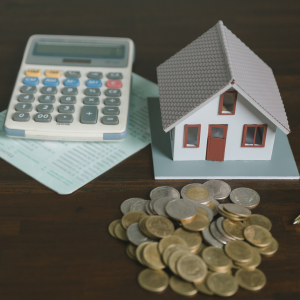
One main way to reach this balance is to closely watch and control the school district’s spending, which will cut down on spending that isn’t necessary. Tough budget reviews make sure that money goes to important things like teacher salaries, student resources, and building repair instead of less important things. That being said, keeping tax rates fixed takes more than just smart spending. In addition, the city and ISD need to come up with new ways to make money, such as attracting companies that pay taxes in the area. Diversifying the city’s income sources can make taxes easier for homeowners by making the city’s economy bigger. Making partnerships with companies and community groups can also help pay for extra school programs without having to raise property taxes each time.
Some creative ways to get money for school projects without putting taxpayers at risk are to use technology grants, private donations, and government aid. Including the local community and other important people in the decision-making process is also important for keeping things open and trustworthy. By being open about budgeting limits and long-term financial goals, the city and ISD can create an environment where people can work together and understand why some tax changes are needed. This openness can make people more likely to support efforts to improve schools, which can raise property values and make people happier in the neighborhood. In order to make Richardson more prosperous, the goal is to create a long-term financial model that fairly distributes the cost of schooling. Richardson can keep attracting new businesses and residents as long as this balance is kept. This will keep the economy growing and the quality of life good.
If rising property taxes linked to school funding in Richardson have you thinking about selling, now could be the perfect time to act. Sell your house fast for cash in Richardson and other cities in Texas, and make the process quick and hassle-free.
Community life is improved by stable property taxes and good schools, which also make the city an attractive place to live and work. The ongoing task is to deal with outside factors like changes in state funding and the economy while keeping the values of good fiscal management and high-quality education at the center of local government. This big idea for balancing tax rates and school spending is very important for the future success of Richardson’s communities.
| School Districts | Property Tax Rate | Impact on Home Values | Community Engagement | Fiscal Responsibility |
|---|---|---|---|---|
| Richardson ISD | Moderate | High Increase | Active | Strategic Planning |
| Plano ISD | High | Moderate Increase | Community-Centric Projects | Efficient Budgeting |
| Garland ISD | Low | Minimal Change | Limited | Cost Management |
| Frisco ISD | High | Significant Growth | Collaborative Initiatives | Progressive Investments |
This table underscores how each school district, including Richardson ISD, balances educational commitments with property tax strategies to enhance both home values and community involvement, reflecting a nuanced approach to socioeconomic planning.
Navigating Richardson’s Property Tax Appeals Process
Richardson property owners should know how to file a tax appeal so they can better handle their financial responsibilities. This part explains the steps needed to appeal property assessments and lists important tools for residents. Knowing how to go through these steps can give people more power and help make sure they are taxed fairly. Knowing the steps to take and the help that is available can have a big effect on how an appeal turns out, giving people a chance to fix any problems. Talking to city resources and the tax office can help make the process clear and give you peace of mind, making sure that property values reflect how the market really is.
Steps to Challenge Your Property Assessment
To start challenging your Richardson property estimate, you need to know how the valuation process works in general. To begin, it’s important to do a thorough search for properties through the voter portal. This website gives you access to property records kept by the local tax office and appraisal districts. Residents can find out important facts about their property’s estimated value, properties that are similar to theirs, and the standards that are used to make the assessments. By looking at this information, renters can find out if their home is overpriced compared to similar homes, which gives them a strong case for an appeal. The next step is to talk to the tax office. You can learn a lot about how to make an official appeal here.
Usually, the first step in the appeal process is to send a notice of protest to the appraisal district within the time limit set by state law. Keeping in touch with the taxpayer contact can help and give you more information during this process. As a key part of helping people, the liaison gives them information on how to do things and what to expect. They are a reliable source for figuring out how to deal with the appeals process and the bureaucratic routes. Once you file an official protest, you can set up a meeting with the appraisal review board (ARB) to make your case. To be ready, get all the necessary paperwork together, such as sales records for the properties in question, independent evaluations, and a list of any mistakes you find in your assessment records. The chances of getting a good result go up when you present a well-researched case backed by strong proof.
The members of the ARB board, who are chosen by the county, look over your paperwork to make sure that property values are applied fairly and consistently across the city. Going to the ARB meeting is very important because it gives people a chance to fight for fair property assessments. If the problem isn’t fixed by the ARB’s decision, it can be taken to the county courts for more action. This would allow for legal oversight and a final decision. Real estate owners can successfully fight for fair taxation by understanding each step of the appeal process. This makes sure that their financial contributions are in line with how much their properties are worth in Richardson.
Resources Available for Residents in the City
Richardson residents can use a number of tools to help them with the process of appealing their property taxes. The local tax office is the best place to get information because it offers services like helping people search for properties, giving them access to a taxpayer portal, and holding educational classes. The goal of these tools is to make property tax issues less confusing and help people understand their rights and duties.
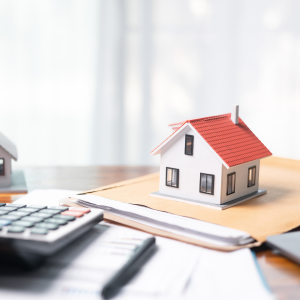
Taxpayer liaisons in the office give residents personalized advice and help them get through the complicated appeals process, including what paperwork they need to send in and when important dates are. The website for the city is another useful tool for people who live there. It has a lot of information about how to file a property tax appeal, such as how to call the appraisal districts and step-by-step instructions on how to file an appeal. The online taxpayer site is very helpful because it makes it easy for property owners to get up-to-date assessment information, check details, and get old tax records. For people who need help in person, the tax office has consultations where people can go and ask questions and get advice that is specific to their case.
When it comes to helping, non-profits can be just as important as city tools. A lot of non-profits give free or low-cost tax advice in the form of workshops or one-on-one meetings with tax experts who know the state and county tax codes. Invaluable information can be gleaned from these groups about how to negotiate well and make strong cases at meetings of the rating review board. Their help can be very helpful, especially for people who are new to property taxes or who are having trouble understanding the legalese and paperwork that is needed.
People who need a more formal lawyer can also get help from legal aid groups. These services provide expert help from people who know a lot about local property law. This improves the level of representation during the appeals process. Residential property owners in Richardson can successfully handle their property tax issues by utilizing the many resources available within the city. In the end, using these resources and keeping informed can help you win your appeals and make sure that your property taxes are based on its fair market value, which is good for both you and the community.
Looking to sell your home? Whether you want a fast sale, wish to skip expensive repairs, or need a simple, stress-free process, call us at (855) 563-4376. We provide fair cash offers, take care of all the details, and ensure a smooth experience from start to finish.
FAQs:
What factors influence property tax rates in Richardson, TX?
Several key factors impact property tax rates in Richardson, including the county appraisal process, budgetary needs of local entities like the city government and school districts, and external economic conditions. Understanding these factors can help residents anticipate changes in their tax obligations.
How does the Richardson Independent School District (ISD) impact property taxes?
The Richardson ISD plays a crucial role in determining local tax rates. It balances educational excellence with fiscal responsibility, using property tax revenue for funding. This affects how tax rates are set to support quality education without overly burdening taxpayers.
What resources are available for residents to appeal their property taxes in Richardson?
Residents can utilize the local tax office, which provides property search assistance and access to the taxpayer portal. Additionally, non-profit organizations and legal aid services offer support for navigating the appeals process.
How does Richardson’s property tax rate compare with that of nearby Dallas?
Richardson typically has slightly lower tax rates compared to Dallas due to its business-friendly policies and economic strategy, which emphasize tax competitiveness while maintaining quality public services.
What steps are involved in challenging a property assessment in Richardson?
The process begins by performing a detailed property search through the taxpayer portal. Homeowners can then file a notice of protest with the appraisal district and attend a meeting with the appraisal review board to present their case.
Helpful Richardson Blog Articles
- Explore Richardson, TX Neighborhood Map
- Is Richardson, TX a Good Place to Live?
- Richardson, TX Property Tax Rate
- Best Richardson, TX Property Manager
- Best Things To Do in Richardson, TX With Kids
- Fun Facts About Richardson, TX
- Richardson, TX Capital Gains Tax Calculator
- Richardson, TX Closing Costs Calculator
- Explore the Cost of Living in Richardson, TX
- Fun Facts About Richardson TX
